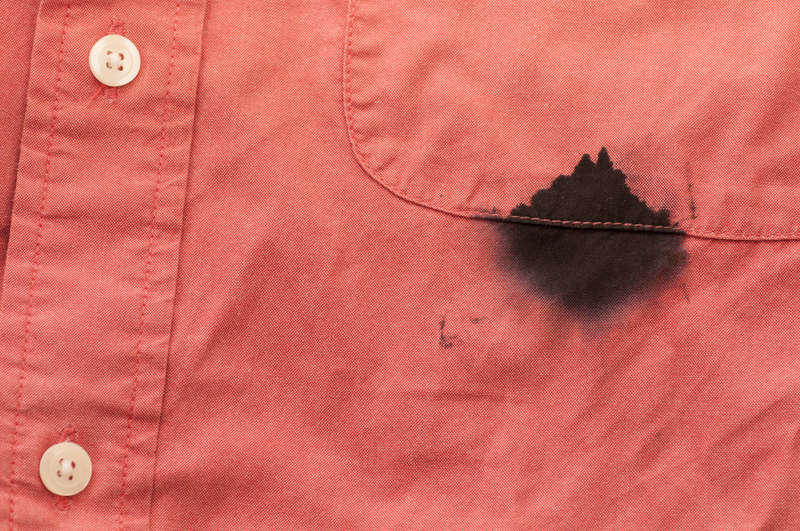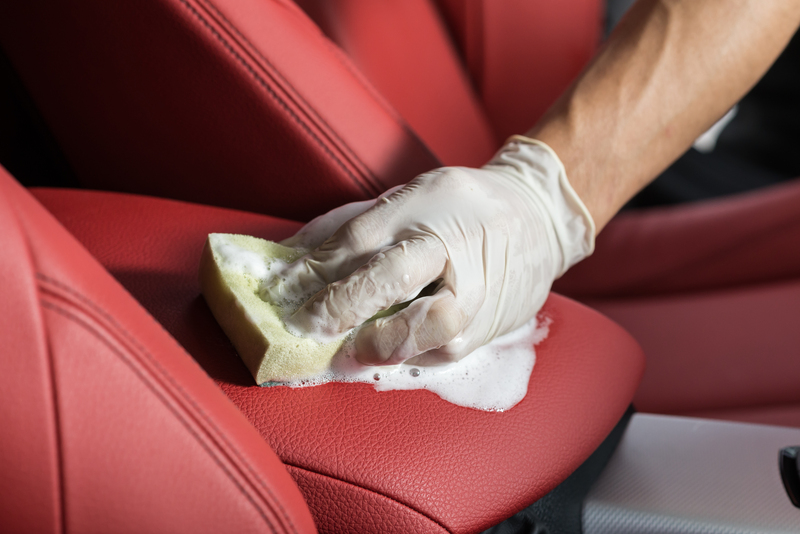Essential Tips for Maintaining a Mold-Free Bathroom
Posted on 10/09/2025
Essential Tips for Maintaining a Mold-Free Bathroom
Every homeowner dreams of a clean and healthy living space, and the bathroom--with its high humidity--can be particularly susceptible to mold. Preventing the growth of mold is crucial for both aesthetic and health reasons. In this comprehensive article, discover essential methods, practical steps, and actionable advice to keep your bathroom mold-free for the long haul.

Understanding the Danger: Why Mold-Free Bathrooms Matter
Mold in bathrooms isn't just unsightly; it can cause health problems (such as allergies, asthma, and respiratory issues) and structural damage to your home. Mold spores thrive in moist, warm environments, making the bathroom a perfect breeding ground.
Regular mold removal is not enough; prevention is the key to truly maintaining a mold-free bathroom. Below, you'll find the most effective and Google-friendly mold prevention solutions to ensure your bathroom stays fresh and safe.
1. Ensure Proper Ventilation
Effective bathroom ventilation is your first line of defense against mold. High humidity, especially after showers and baths, creates the perfect condition for mold spores to flourish.
Best Practices for Bathroom Ventilation
- Install an exhaust fan: Make sure your exhaust fan is appropriately sized for your bathroom. Let it run for at least 20 minutes after every shower.
- Open windows: If your bathroom has a window, open it while using the shower and for some time afterwards.
- Leave the door open: After using the bathroom, leave the door ajar to promote air circulation and drying.
- Clean your exhaust fan filter regularly to maintain optimal airflow.
2. Control Moisture and Humidity
Reducing moisture levels in the bathroom is fundamental for mold prevention.
Key Moisture Management Tips
- Use a dehumidifier: Especially in homes where humidity is consistently high, a small dehumidifier can make a big difference.
- Dry all surfaces: Use a squeegee on shower walls and doors after each use to remove lingering water.
- Fix leaks promptly: Inspect under sinks, around toilets, and bathtubs for any leaks, and repair them immediately.
- Keep items dry: Hang towels and bath mats after each use and avoid leaving wet clothes in the room.
3. Regular Cleaning Routine
Consistent cleaning is vital for a mold-free bathroom. Mold begins as small spots, so frequent cleaning reduces the chances of growth.
The Ideal Bathroom Cleaning Schedule
- Clean weekly: Pay special attention to grout lines, caulking, faucets, and corners where mold is most likely to appear.
- Use mold-inhibiting cleaners: There are numerous commercial and DIY options available containing vinegar, baking soda, or hydrogen peroxide.
- Wipe surfaces dry: Ensure all surfaces are completely dry after cleaning.
- Don't forget the shower curtain: Wash it regularly or replace it if you notice any mold spots.
4. Optimize Bathroom Materials
Some materials are naturally more resistant to moisture and less prone to developing mold. Choosing these options during renovations or upgrades can safeguard your space.
Best Materials for a Mold-Resistant Bathroom
- Ceramic or glass tiles: Easy to clean and non-porous, these are less likely to harbor mold than natural stone or wood.
- Mold-resistant paint: Use paints specifically designed to inhibit mold growth on walls and ceilings.
- Replace old caulking: Old, cracked caulking is a mold magnet. Use high-quality, mold-resistant caulk and replace it at the first sign of wear.
- Opt for glass shower doors instead of curtains, as they dry faster and are easier to keep clean.
5. Watch for Hidden Problem Areas
Mold can thrive in spots you may not notice during your usual cleaning routine. Regularly inspect these often-overlooked areas:
- Behind and under the toilet
- Under sinks and around pipe joints
- Ceiling corners
- Ventilation covers and fans
- Behind shower walls, especially in older homes
If you detect a musty odor, it could signal hidden mold. If mold is found in inaccessible areas, consider bringing in a professional for thorough remediation.
6. Encourage Air Circulation With Smart Design
Remodeling or updating your bathroom presents the ideal opportunity to incorporate mold-resistant features directly into the design.
Smart Design Choices for a Mold-Free Bathroom
- Choose floating vanities: These allow for better airflow around the base, discouraging mold.
- Minimize clutter: Limit the number of bottles, loofahs, and personal items in the shower that can trap and retain moisture.
- Install wall-mounted storage: Elevate items above the floor to reduce surface moisture contact.
7. Use Effective Mold-Preventing Products
There is an ever-increasing market of products designed to prevent mold growth in bathrooms:
- Mold-resistant grout and caulk: These specialized products offer greater protection than standard versions.
- Moisture-absorbing crystals: Place desiccant packs or containers in inconspicuous corners to reduce humidity.
- Preventive sprays: Use sprays that create an invisible barrier against mold and mildew in high-risk areas.
8. Act Quickly at First Signs of Mold
Even with your best efforts, sometimes mold can sneak up. Swift action is crucial. Address any mold patches immediately before they become major infestations.
DIY Methods for Small Mold Spots
- White vinegar: Spray undiluted vinegar onto the spot, let it sit for an hour, and wipe clean.
- Hydrogen peroxide: Apply 3% hydrogen peroxide to affected surfaces, allow it to bubble for 10 minutes, then scrub and rinse.
- Baking soda paste: Mix baking soda with water, apply to the area, and scrub gently.
For large or persistent mold, always consult a professional.
9. Educate Your Household
Maintaining a mold-free bathroom is a team effort. Make sure everyone in your home has a basic understanding of why mold prevention matters and teach good habits:
- Wipe down the shower, sinks, and counters after use.
- Hang towels and mats to dry, never let them pile up.
- Report leaks or water spills immediately.
- Leave doors and windows open after bathing.
Mold Prevention for Small Bathrooms
Small bathrooms can be extra vulnerable to mold due to tight spaces and poor airflow. Here are special strategies for small spaces:
- Install a powerful, quiet exhaust fan rated for the room size.
- Avoid heavy curtains or blinds, which may retain moisture.
- Opt for wall shelves rather than floor cabinets.
- Choose light colors, which show mold early and reflect light to keep the room dry.
Frequently Asked Questions: Maintaining a Mold-Free Bathroom
How often should I clean my bathroom to prevent mold?
At least once a week, focusing on all surfaces, grout lines, faucets, and high-moisture areas. High-traffic bathrooms may require more frequent cleaning.
Is bleach the best solution for bathroom mold?
While bleach can discolor and remove surface mold, it might not penetrate porous surfaces. Vinegar or hydrogen peroxide are effective and safer alternatives for regular use.
How can I tell if mold is hidden in my bathroom?
A musty smell, persistent allergies, or visible stains often indicate hidden mold. Remove access panels or tiles, or consult a professional for a deeper inspection if you suspect hidden growth.

Summary: The Key to a Mold-Free Bathroom
Achieving a mold-free bathroom calls for continuous vigilance and smart habits. From improving ventilation to choosing the right cleaning products, and using mold-resistant materials, every detail matters. By following these essential tips and involving your entire household, you secure a healthier, fresher, and more beautiful bathroom for years to come. Remember: Prevention is always easier and less expensive than remediation.
Additional Resources
Start implementing these essential bathroom mold prevention tips today for a safer, cleaner home!



